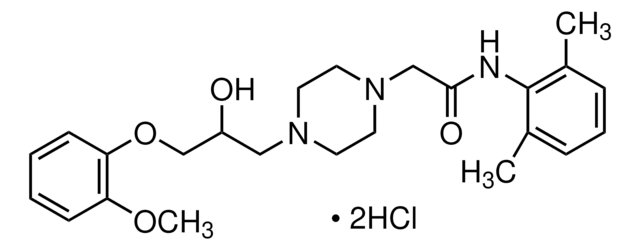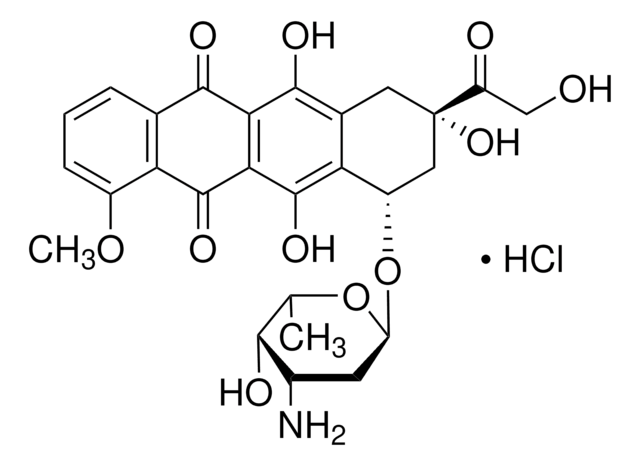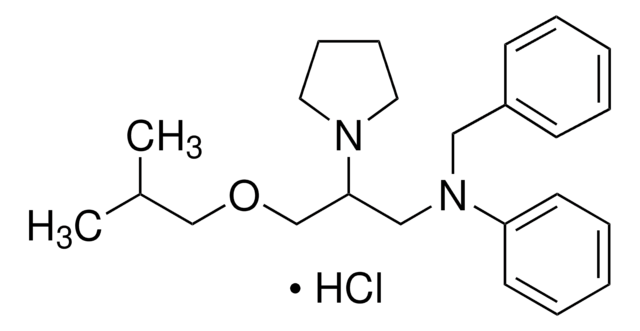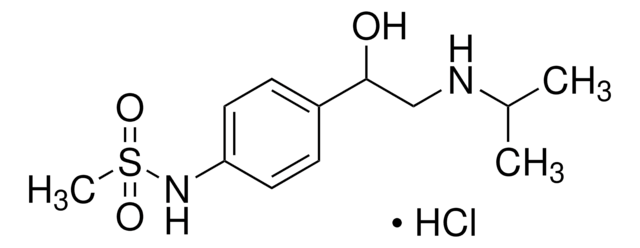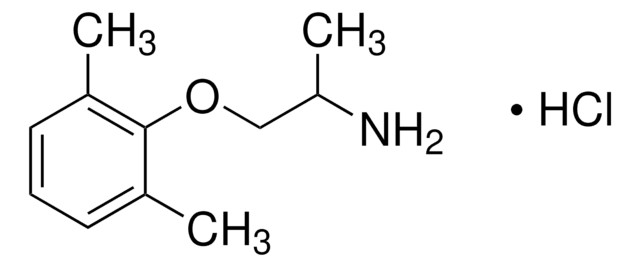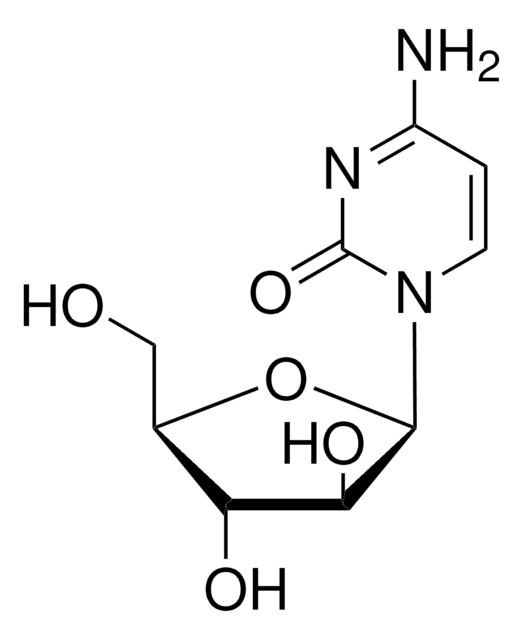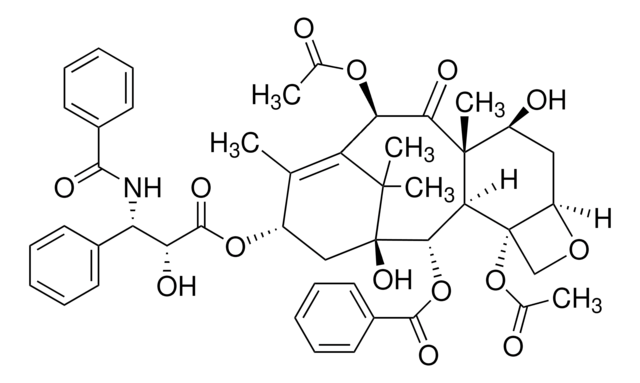推荐产品
质量水平
方案
≥98% (HPLC)
表单
powder
储存条件
desiccated
颜色
white to beige
溶解性
DMSO: 2 mg/mL, clear
储存温度
−20°C
SMILES字符串
Cl.N3(C[C@@H](CC3)O)[C@H]1[C@@H](CCCC1)OCCc2cc(c(cc2)OC)OC
InChI
1S/C20H31NO4.ClH/c1-23-19-8-7-15(13-20(19)24-2)10-12-25-18-6-4-3-5-17(18)21-11-9-16(22)14-21;/h7-8,13,16-18,22H,3-6,9-12,14H2,1-2H3;1H/t16-,17-,18-;/m1./s1
InChI key
JMHYCBFEEFHTMK-IIUXMCBISA-N
生化/生理作用
Anti-arrhythmic that exerts anti-fibrillatory efficacy via potential- & rate-dependent Nav1.5 (SCN5A) as well as atrial-selective Kv1.5 (KCNA5) blockade in vivo.
Vernakalant is a multiple ion channel blocker that exerts in vivo anti-fibrillatory (anti-arrhythmic) efficacy (ED50 = 1.5 μmol/kg/min iv. against ischemia-induced arrhythmias in rats) via atrial-selective Kv1.5 blockage (hKv1.5/rKv4.2/rKv4.3 IC50 = 13/38/30 μM at 1Hz & -80 to 60 mV in 200 (Kv1.5) or 400 (Kv4) msec) as well as potential- and rate-dependent Nav1.5 blockade (inward Na current INa IC50 = 9 μM/20 Hz & -80 mV, 31 μM/1Hz & -60 mV, 107 μM/1Hz & -120 mV using HEK hNav1.5 cells).
储存分类代码
11 - Combustible Solids
WGK
WGK 3
闪点(°F)
Not applicable
闪点(°C)
Not applicable
历史批次信息供参考:
分析证书(COA)
Lot/Batch Number
Toshiki Chiba et al.
Journal of pharmacological sciences, 130(3), 170-176 (2016-04-02)
Electrical remodeling plays a pivotal role in maintaining the reentry during atrial fibrillation. In this study, we assessed influence of electrical remodeling on pharmacological manipulation of the atrial refractoriness in rabbits. We used an atrial electrical remodeling model of the
Gerrit Frommeyer et al.
Journal of cardiovascular medicine (Hagerstown, Md.), 18(9), 663-668 (2017-07-12)
Current guidelines recommend vernakalant for pharmacologic cardioversion of recent-onset atrial fibrillation. However, this drug is not established as chronic therapy. In total, 15 rabbit hearts were Langendorff-perfused. A burst pacing protocol-induced atrial fibrillation in 7 of 15 hearts at baseline
Arne van Hunnik et al.
Heart rhythm, 13(4), 964-972 (2015-12-19)
Vernakalant inhibits several potassium currents and causes a rate- and voltage-dependent inhibition of the sodium current. The aim of this study was to evaluate the antiarrhythmic mechanism of vernakalant in normal and electrically remodeled atria. Fourteen goats were instrumented with
David Fedida et al.
Journal of cardiovascular electrophysiology, 16(11), 1227-1238 (2005-11-24)
RSD1235 is a novel drug recently shown to convert AF rapidly and safely in patients.(1) Its mechanism of action has been investigated in a rat model of ischemic arrhythmia, along with changes in action potential (AP) morphology in isolated rat
Arne van Hunnik et al.
Europace : European pacing, arrhythmias, and cardiac electrophysiology : journal of the working groups on cardiac pacing, arrhythmias, and cardiac cellular electrophysiology of the European Society of Cardiology, 20(1), 140-148 (2017-04-28)
Besides the inhibition of the sodium inward current, vernakalant also inhibits the ultra rapid rectifier (IKur) and transient outward current (Ito). Inhibition of these currents increases contractility in canine atrial myocytes and goat atria. We investigated the effect of vernakalant
我们的科学家团队拥有各种研究领域经验,包括生命科学、材料科学、化学合成、色谱、分析及许多其他领域.
联系技术服务部门